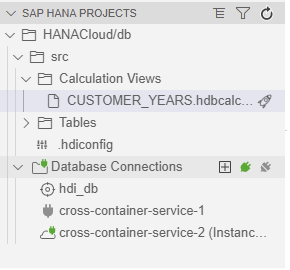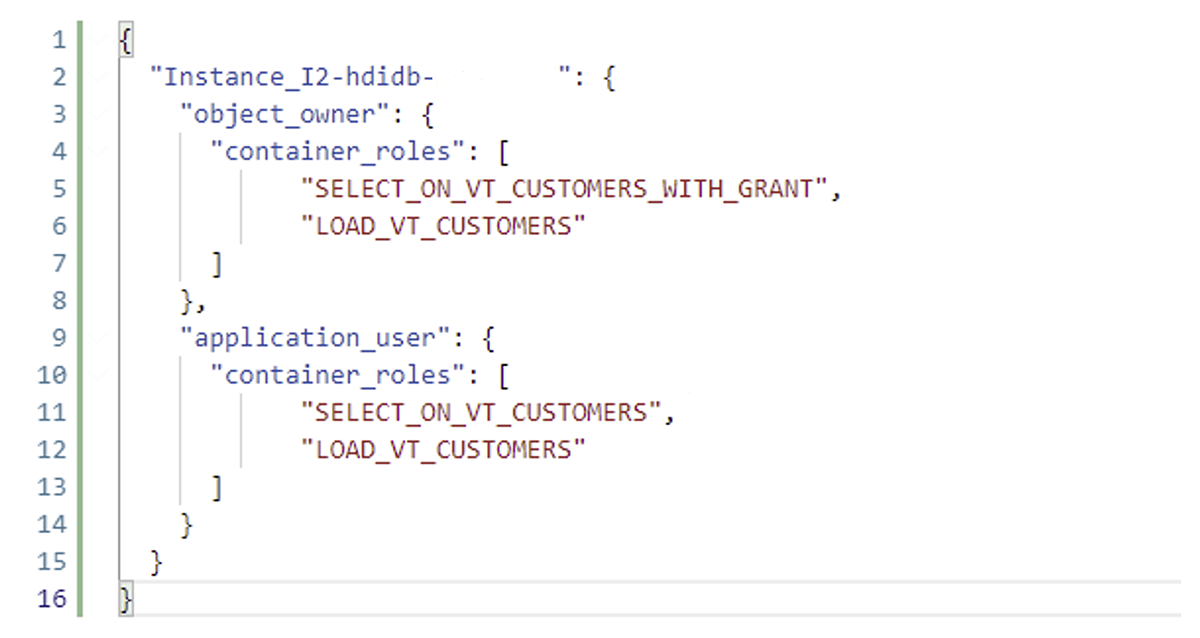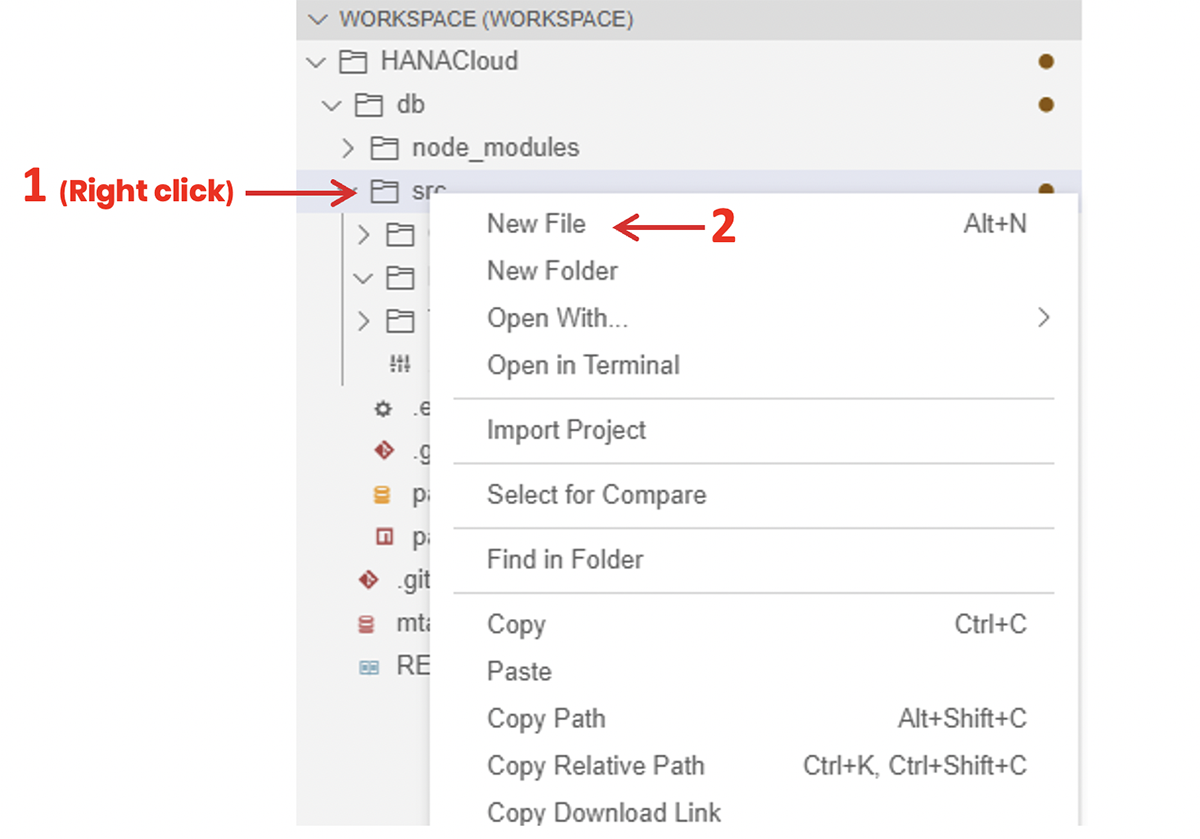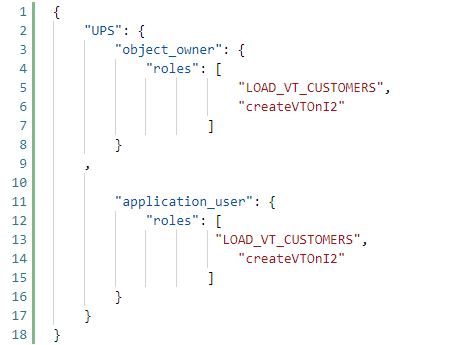If you’ve been following our SAP HANA series so far, in Part 1 you will have learned how to create a development environment, in Part 2 you’ll have learned how to define table structures and rows, and in Part 3 you’ll have started learning about building a federated scenario.
Si aún no ha leído esas primeras 3 publicaciones, le sugerimos que regrese y se familiarice con ellas antes de continuar con el artículo de hoy.
Today we’re building on the work we did in Part 3, and learning how to take advantage of the configuration and structure we defined previously in order to model data in Instance 1 that is contained in Instance 2.
1. Calculation views
The first step is to create a calculation view. To do this, follow the usual steps, create a database artifact, and select the ‘Calculation View’ option among the ones available in the list. Leave the standard settings as they are. You will notice that the aggregation and semantics node is automatically created, and you cannot delete it:
As a test for this session, we will create a CV using the table T_CUSTOMERS table from Instance 2. To be able to select Instance 2 tables add a database connection by clicking the “+” button on the project list:
You will be asked to enter the API endpoint (the information is available in the cockpit, and it should be similar to https://api.cf.us10.hana.ondemand.com), as well as the associated email address and password. Once you’ve done so, a new tab will be opened where you can select the desired space from among the previously created ones.
Once the connection is working, add a union node to the calculation view and click the ‘Add Data Source’ button, as shown here:
Luego, busque la tabla ubicada en la Instancia I2 (recuerde seleccionar el servicio recién creado en la lista desplegable) y seleccione 'Create Synonym'.
2. Crear y configurar un Sinónimo
As an introduction to this section and considering the object’s importance in SAP HANA Cloud, let’s define what a synonym is.
En términos generales, un sinónimo es un alias para un objeto de base de datos. Mientras trabaja con él, puede pensar en él simplemente como el objeto que es el objetivo del sinónimo. Pertenece a su propio esquema, que suele ser independiente del esquema al que pertenece el objeto de la base de datos de destino. Por este motivo, los sinónimos se definen si se refiere a un objeto que no está en el mismo esquema o contenedor de la aplicación.
Going back to the step by step guide, in the creation wizard enter a suitable name for the synonym, (as a best practice choose a name beginning with an ‘S_’), select ‘Generate .hdbgrants File’, and add the roles created previously:
Open the ‘.hdbgrants’ file and add the other roles needed, paying attention to the comma between role names:
Una vez hecho esto, tanto el propietario del objeto como el usuario de la aplicación pueden cargar y recuperar los datos contenidos en él.
3. Crear y configurar un user-provided service
While we’re talking about loading data, let’s also authorize data loading to other tables. Just to illustrate the other options, as we are not connecting to another container but to a schema or virtual table, let’s create a UPS. We already have created the user we need previously. Follow the usual steps to add a database connection and select ‘Create user-provided service instance’:
Enter the necessary information, and remember to connect to our instance. For the purposes of this article, this is named Instance 1 with user UPS. Note that this was defined by us in the previous blog (Part 3) so double check your UPS definition. Remember to leave the ‘Connect to the database securely’ checkbox marked as SAP HANA Cloud requires this type of connection. Finally, add the connection.
To work with this UPS, we need to assign it roles and privileges, for this purpose, create a ‘.hdbgrants’ file, right-click on the desired destination folder and select the ‘New File’ option:
Cuando el menú se despliegue, introduce el nombre deseado y la siguiente extensión:
Al estar realizando la misma acción, pero de forma diferente, añadiremos código similar al siguiente archivo:
You’ll remember that in the previous blog post (Part 3), we created a virtual table pointing to T_CUSTOMERS from the Database Explorer. With the definition of the roles complete, we can now create it via the UPS as a database artifact.
4. Conclusión
In this article, you’ve learned how to manage data contained in different schemas, projects, etc. in different ways, and you’ve seen how to include data in a Calculation View. Note that the same process would be used with the other database artifacts such as Flowgraphs.
So if you’ve followed the series so far, you should now know how to create and configure an SAP HANA Cloud project to be able to model data from inside and outside your schema and project. Keep an eye on our blog for the next installment in the series—Part 5—where we’ll be exploring strategies for improving your calculation views.










